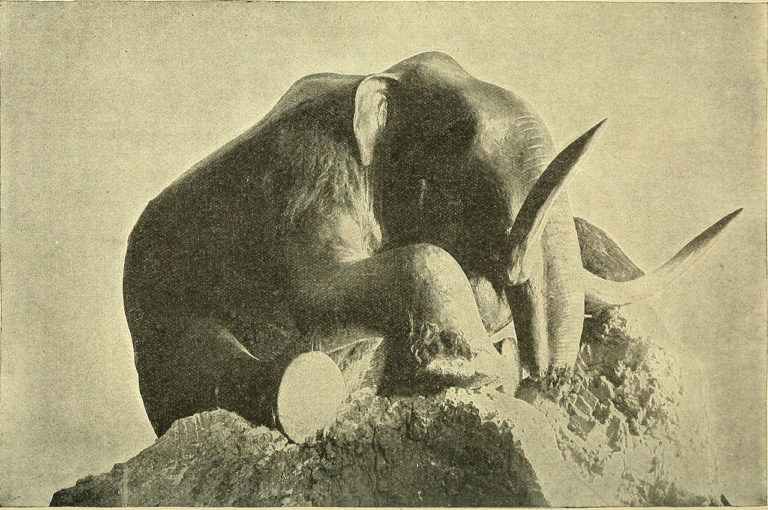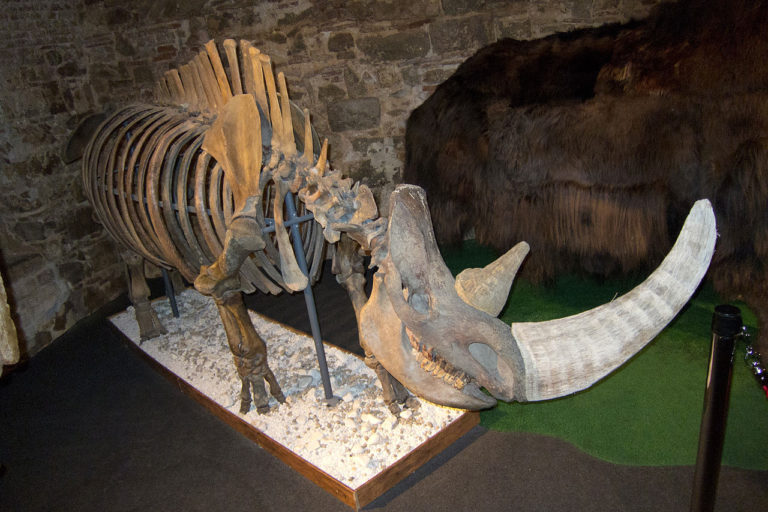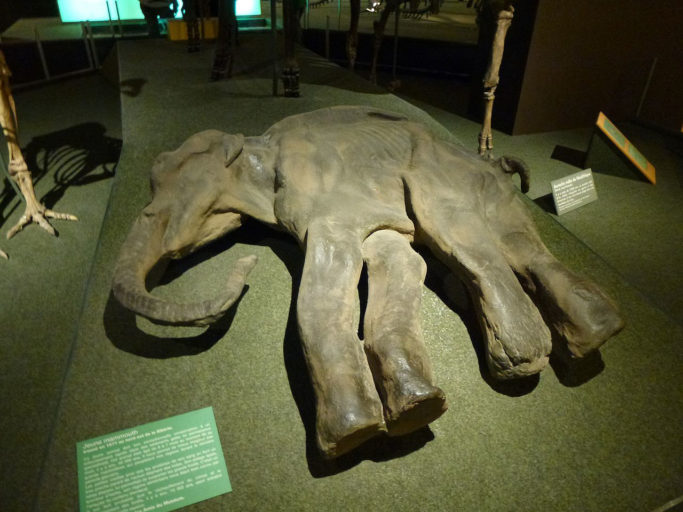- The new analysis shows that, while hunting caused problems for cold-dwelling rhinos and mammoths, and in some cases drove them from certain areas completely, the changing climate ultimately led to their extinction.
- Hunting pressure also eradicated some species of horses, but others, such as wild horses (E. przewalskii) and donkeys (E. asinus), were able to survive.
- Along with deer, these mammals probably survived because of their smaller sizes, increased mobility and higher reproductive rates than either mammoths or rhinos.
- With just a 1-degree Celsius rise in Earth’s temperature per century, we could see the same rise in temperatures over the next 500-1,000 years that took 10,000-15,000 years at the end of the last ice age.
Large mammals living between about 7,000 and 25,000 years ago faced a massive upheaval in their environments on multiple fronts. As the Late Pleistocene was ending, humans were having a big impact on their surroundings, and the planet’s climate was changing, culminating in the end of the most recent ice age. That 10,000- to 15,000-year span had drastic impacts on the rhinos, mammoths, horses and deer of the era.
But because these two events happened at roughly the same time, scientists have had a tough time teasing apart which merely affected these big mammals, and which proved to be the nail in the coffin for several of them as species. Now, a pair of researchers from China has found that swift spikes in ancient temperatures – though considerably slower than the climate change the Earth is currently undergoing – had major impacts on the makeup of life, especially in northern regions. In the highest profile animals, climate changed proved to be the critical factor leading to their demise.

“In this study, we clearly demonstrate that the rapid global warming was the predominant factor driving the total extinction of mammoths and rhinos in frigid zones from the Late Pleistocene and Early Holocene,” said Zhibin Zhang, a zoologist at the Chinese Academy of Sciences in Beijing, in an email. His team’s work was published in the journal Proceedings of the Royal Society B: Biological Sciences on March 22.
To better understand how the impacts of hunting and climate change shook out, Zhang and his colleagues looked at ice cores in Greenland, Antarctica and China to ascertain how quickly historical changes in temperature touched off shifts in the home ranges of these mammals. They also examined records of human settlements and looked at the distance between them and sites where the bones of mammoths, rhinos, horses and deer have been found. This comparison allowed them to estimate how much hunting pressure these animals might have felt.
From their analyses, they concluded that mammoths (Mammuthus spp.) ultimately succumbed to the hazards of a warming climate, rather than to the points of human-made spears. Even though their research did show people had impacts on mammoths in eastern Eurasia, “In general, human hunting was not the primary cause” of their extinction, Zhang said. “Before they became extinct around [12,000 years ago], they were very close to human sites for nearly 30,000 years, indicating they could live well with people.”
The authors report that human hunting had a bigger role in forcing rhinos (of the Family Rhinocerotidae) out of certain areas in eastern Eurasia, which is basically defined as the area east of the Middle East. Hunting also cleared some species of horses from spots. However, the uptick in temperatures was critical in causing the complete eradication of rhino species, Zhang said. Wooly rhinoceros (Coelodonta spp.) in particular seemed to be forced from existence by the warming climate.

The horse (Family Equidae) and especially deer (Family Cervidae) seem to have been able to evade total extinction because of their size, he added: “Smaller mammals need smaller home range[s] and have larger reproduction rate[s], which [are] more resistant to external disturbances.”
The team’s findings suggest dire consequences if Earth continues heating up on the same trajectory. Climate change is currently progressing at a much faster clip than it was at the end of the last ice age, when even that warming was too fast for mammoths and cold-weather rhinos to adapt. In that 10,000 to 15,000 years, the Earth’s temperature rose 5 to 10 degrees Celsius. The authors point out that, if human-driven climate change notches up temperatures by even 1 degree every century, we would see a similar change in 500-1,000 years.
On the hunting side, we humans have also become much more efficient at extirpating – and in many cases, causing the outright extinction of – wildlife. “The modern species extinction rate is much larger than [the] pre-industrial time,” Zhang said, and today, humans are “the key reason” for “massive local [and] regional species extinctions.” Research published in 2015 found that the “sixth mass extinction” is happening at least 100 times faster than what’s happened in the past.
To safeguard imperiled species against human pressures and what appear to be escalating temperatures for the foreseeable future, Zhang and his colleagues argue for better protected nature reserves that are larger and better connected. This strategy would allow animals to move away from the dual threats of climate change and hunting.

Still, Zhang said, if we don’t slow down or reverse climate change, many more species may be in danger.
“Rapid and large variation of temperature of the earth would greatly change the fauna and cause massive species extinction, particularly in the high-latitude or high-altitude regions,” he said.
CITATIONS:
- Ceballos, G., Ehrlich, P. R., Barnosky, A. D., García, A., Pringle, R. M., & Palmer, T. M. (2015). Accelerated modern human–induced species losses: Entering the sixth mass extinction. Science advances, 1(5), e1400253.
- McCallum, M. L. (2015). Vertebrate biodiversity losses point to a sixth mass extinction. Biodiversity and conservation, 24(10), 2497-2519.
- Wan, X., & Zhang, Z. (2017). Climate warming and humans played different roles in triggering Late Quaternary extinctions in east and west Eurasia. In Proc. R. Soc. B (Vol. 284, No. 1851, p. 20162438). The Royal Society.
FEEDBACK: Use this form to send a message to the author of this post. If you want to post a public comment, you can do that at the bottom of the page.